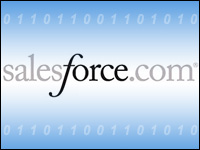
Of all the CRM subsector technologies, sales force automation is the most mature. Expecting dramatic change in this category, therefore, would be akin to expecting the radical realignment of a general accounting ledger package.
Yet, over the last year or so, dramatic change is exactly what has occurred, as a new generation of providers have entered the marketplace with their own approaches to sales force automation. To be sure, many of these changes build upon developments that have been in the works for some time — such as more intuitive user interfaces, for instance.
In fact the entire sales process may soon experience a total realignment to include a broader range of tangentially related functions, thanks to a handful of new applications.
A Second Wind
Users have taken notice of the new functionality and have begun to reallocate IT budget dollars to thissegment, Sheryl Kingstone, a CRM analyst with the Yankee Group, tells CRM Buyer. “
A lot of what I see are redeployments among the newer vendors in this space — the Salesforce.coms replacing the Siebels or the Goldmines in a company,” she says.
For example, traditional client-server applications are definitely out of favor among enterprises that rely on sophisticated sales forecasting and pipeline management, she says. “These older tools are tooinflexible and do not really result in increased sales effectiveness.”
Also, the Software as a Service model has made it easier for companies to deploy new applications. “There is a lot more guidance built into the latest generation of systems, as well as context,” Kingstone says.
User Interfaces and Change Management
Indeed, the newest of the new are advanced enough to offer users predictive outcomes based on certain actions or proactive lead management. However, even SFA applications with traditional functionality bear very little resemblance to their earlier iterations.
Many new and upgraded applications offer new value to users through more-intuitive interfaces and, at the advanced end, integrated processes that cross functional business lines. “These changes can have a dramatic impact on adoption and productivity,” Rebecca Wettemann, vice president of Nucleus Research, tells CRM Buyer.
Seemingly small changes — such as Salesforce.com’s new feature that allows users to ‘mouse over’ an item — “completely break that old paradigm of having to click through many different files,” Wettemann notes. “Salesforce.com is an example of how this space is constantly evolving.”
Visual Mining, a provider of on-demand graphical reporting, visualanalytics and performance dashboard applications, provides another example of a seemingly small change delivering big advances in productivity. “Analytics is part of most SFA platforms, but Visual Mining has developed a dashboard that allows managers and users to build reports and generally monitor sales activities without having to rely on a tech person to build a report every time one is needed,” says Wettemann.
Collaboration between sales, marketing and the customer is also receiving a lot of focus, she observes. “The Savo Group, for example, offers a standard set, or type, of marketing and sales documents such as brochures or e-mail messages. Marketing can create initial materials from these templates to ensure that the content is consistent, but sales has access as well.”
Building Intelligence Into the Sales Process
More-advanced applications are taking entirely new approaches to the sales process, generally byincorporating intelligence into the application, Denis Pombriant, principal of Beagle Research, tells CRM Buyer.
“Most of the improvements I have been tracking in SFA applications are taking place outside of, well, SFA,” he says. New SFA applications are focusing on more-accurate lead development and management, and pushing the sales process all the way to billing and the cash cycle.
The common factor among these new vendors, Pombriant says, is that the they are all morphing SFA into a platform that can accept standard modular “helper” applications, such as those for content management or marketing.
A highly functional lead process, for instance, needs targeted information, and Pombriant points toEloqua, the provider of an integrated sales and marketing platform that basically vets a sales lead, to illustrate this.
“Before handing it over to sales, [Eloqua] looks at the lead to see what is needed to be done to improve it and turn it into a ‘true’ lead,” he says. “It is designed to take suspect leads and either mature them or throw them out of the process entirely.”
Indeed, Pombriant says, truly cutting-edge functionality includes applications that evaluate a portion of the sales pipeline and then suggest ways to improve the process.
Ardexus, for example, offers a sales cycle manager that has A1-like capabilities that will evaluate the sales cycle at three different points: Will the deal happen, when will it happen, and will the user get it?
“It can predict, for example, that a particular transaction has an 80 percent chance of closure,” Pombriant explains, “or it could tell you that that 80 percent could drop to 60 percent if you don’t give the client a second demo.”
The functionality is not quite where he would like to see it, though.For example, it doesn’t answer the question, “If the demo went well, would the chance for closure stay at 60 percent?”























































